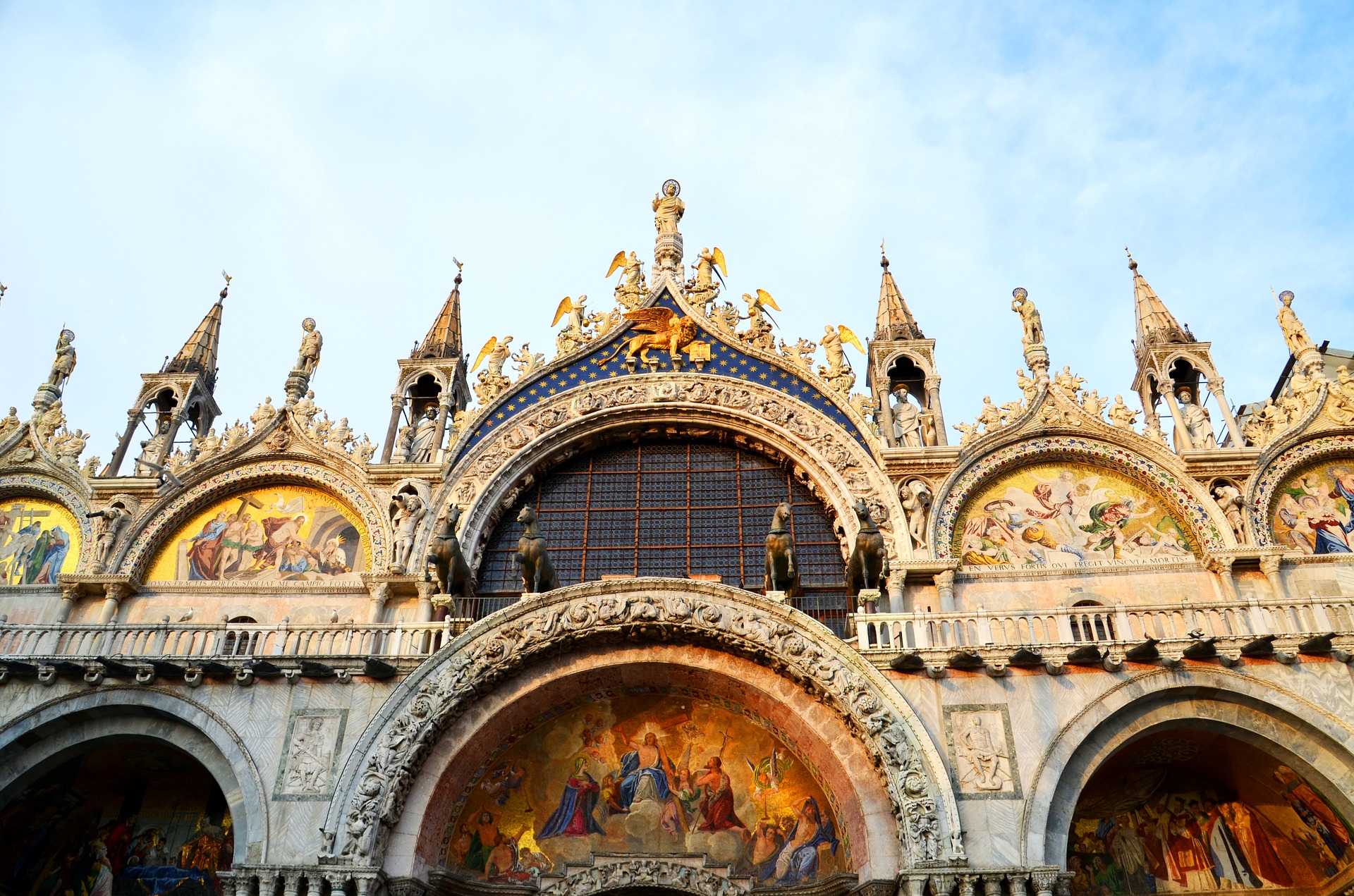St Mark’s Basilica
The Patriarchal Cathedral Basilica of Saint Mark , commonly known as St Mark’s Basilica , is the cathedral church of the Roman Catholic Archdiocese of Venice, northern Italy. It is the most famous of the city’s churches and one of the best known examples of Italo-Byzantine architecture. It lies at the eastern end of the Piazza San Marco, adjacent and connected to the Doge’s Palace. Originally it was the chapel of the Doge, and has been the city’s cathedral only since 1807, when it became the seat of the Patriarch of Venice, archbishop of the Roman Catholic Archdiocese of Venice, formerly at San Pietro di Castello. The building’s structure dates back to the latter part of the 11th century. Much work has gone toward embellishing this, and the famous main façade has an ornamented roofline that is mostly Gothic. The gold ground mosaics that now cover almost all the upper areas of the interior took centuries to complete. In the 13th century the external height of the domes was greatly increased by hollow drums raised on a wooden framework and covered with metal; the original ones are shallower, as can be seen on the inside. This change makes the domes visible from the piazza. For its opulent design, gold ground mosaics, and its status as a symbol of Venetian wealth and power, from the 11th century on the building has been known by the nickname Chiesa d’Oro . It achieves an Oriental feeling of exoticism, has all the elements of the Venetian style of the Renaissance Art, remains unique, and essentially a product of Italian workers of all sorts.
More details: https://en.wikipedia.org/wiki/St_Mark%27s_Basilica



